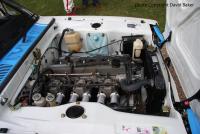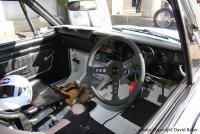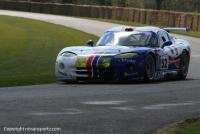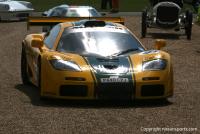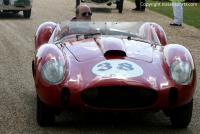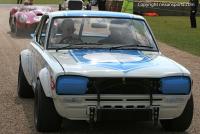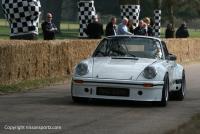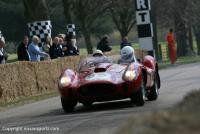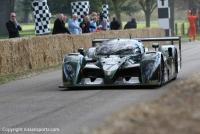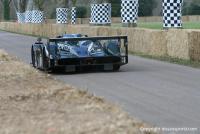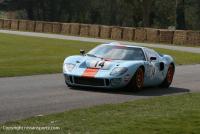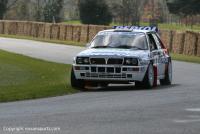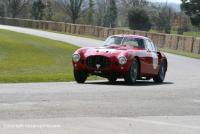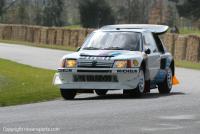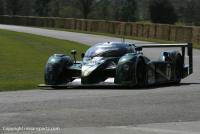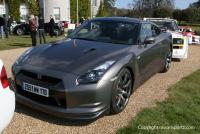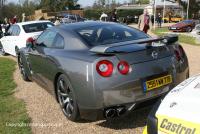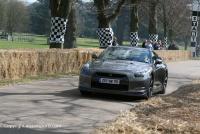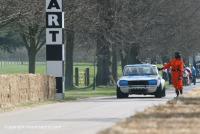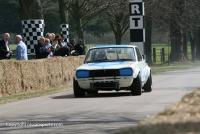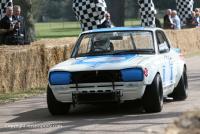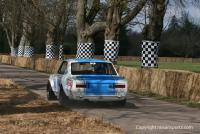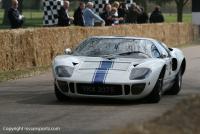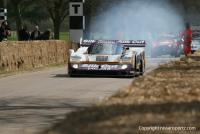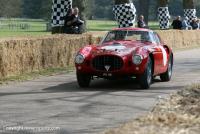Everything posted by HS30-H
-
Car names factory
Surely the most relevant meaning attached to the 'Z' signal flag - as far as it applies to the story of 'our' cars - is what it meant to Katayama and Matsuo, between whom the vignette took place. If it was not for this little tale, the 'Z' signal flag would have absolutely no relevance to the story surrounding our cars whatsoever - apart that is from the coincidence of the letter 'Z' signal in some uses of the flag. What it signified to Katayama and Matsuo is what - I suggest - is of importance to us. Don't discount the possibility that they themselves may not have completely understood its historical significance. When I asked Matsuo san about it, his explanation - in the most simple terms that I can translate here by way of explanation - was that to him, in the context of the situation in which it was used, it meant "Let's go for it"............. Alan T.
-
Loop pile carpet, any recent purchases? (2008)
Mike, Whilst I applaud your pro-active efforts to get close to the original story, and the original spec for the early USA cars, can I please make a point here? You quote Brian Pilati's statement that "...the Z was not originally designed with carpets, they came with rubber mats." as though you believe it to be true. I think repeating such statements gives them more weight, and they gradually get taken as gospel. As I previously pointed out in this thread, the Z most certainly was designed with carpets. In fact, both fully carpeted and rubber-matted versions were available from launch. The distinction of course is that Brian Pilati's quoted quote applies to the first HLS30-U models that were sent to the United States and to Canada. It does not apply to "the Z" in general, and especially not to the Japanese home market models - which were just as much a part of the "design" as any others. Can we PLEASE remember to make this distinction when talking about the "design" of these cars, and the peculiarities and specs of different market models? Apologies for the interjection. Alan T.
-
Goodwood Festival of Speed 2008 Press Day
Yes, It's got the tiny booster. Needs two feet on the middle pedal really! The car is fitted with the Sports Option MK63-20S four-pot 'FIA' front calipers, and the vented front discs. Front pads are special 'ENDLESS' compound that need quite a lot of warming up before they will really bite. Rear brakes are the standard type drums but with the Sports Option linings. Whole driving philosophy of these cars in period ( for the tracks that they drove on ) was one of keeping up momentum. Later in the '72 season they fitted rear discs to the Works cars, which must have helped a great deal I reckon. They also deleted the booster and fitted a bigger M/C on the Works cars for better 'feel'. Must have been hard work to drive in the long races. It could certainly do with more brakes, but I'd like to try and keep it as period-correct as possible. I'm aiming at mid-1971 type spec, which leaves me stuck with the current setup. Personally speaking, I like both old and new. Everything should be taken on a case-by-case basis. If I had unlimited funds I'd have a very varied and 'catholic' collection of both old and new, and of any market sector / purpose. I don't 'see' nationalities of manufacturers as any kind of excuse for complete dismissal or affection. I find it hard to relate to anybody who would say that they "love" classic cars, but then say that "British" cars "don't do it" for them. If you see something that you have never seen before, would you change your opinion of it once you found out what country it was made in? That seems quite obtuse to me. I guess we won't be seeing you at the Goodwood Festival of Speed then? :cheeky:
-
Overhead at a car show last weekend
OK Tomohawk, I believe you. Two for "moompup" then.
-
Overhead at a car show last weekend
That might have been because of the quality of the point making, rather than the point being made. Never mind, at least you bagged one. And Tomohawk doesn't count because I'm still not 100% sure he understood that your point was, er, missing the point. You mean that there was a Mr Nissan.....???!!! WOW. That's one that got left out of the history books. I guess he must be the guy that wrote his name in big letters on the top of your engine, huh? I love these comedy threads. Alan T.
-
Overhead at a car show last weekend
Grumpy? Moi? I'm my usual happy-go-lucky, hail-fellow-well-met self. On the other hand, there's a full moon tonight.....
-
Overhead at a car show last weekend
Any relation to 'Infiniti'? Maybe they should have stuck with 'Datsun'. At least you might have a better chance of spelling it correctly.
-
Overhead at a car show last weekend
"...one of the largest corporate blunders of the 20th Century."? Wow. That's a big statement. Can't take the people who would say something like that seriously. Who are these people? One could argue that the bigger mistake was pinning the 'Datsun' name on a Nissan-designed, Nissan-engineered and Nissan-manufactured product, and hence misleading people into believing that it was a Datsun-designed, Datsun-engineered and Datsun-manufactured product. Such a decision was always going to cause confusion when the truth was revealed. Alan T.
-
Goodwood Festival of Speed 2008 Press Day
PMC.S = "Prince Motor(ist) Club. Sports" The Prince Motor Company, like many of the Japanese car manufacturers in the late Sixties, made their race teams like little supporters clubs. PMC.S was formed as the Prince in-house race team, and fans could join the club and get extra benefits at race meetings and regular newsletters etc. When Prince were merged with Nissan in 1966, PMC.S became a focus point for sporting Skyline fans in particular. The Skyline factions inside the Nissan organisation kept up the traditions of the club and still used the famous white on red PMC.S stickers on their cars. The 'Works' C10-series Skyline GT-R race cars were entered into races under the PMC.S banner ( so that PMC.S was the 'entrant' rather than Nissan ) and the Works drivers were - technically - employed by PMC.S, whereas the Zs, Sunnies and Bluebirds for example were raced under the SCCN banner ( SCCN = Sports Car Club of Nissan ) which was Nissan's non-Prince faction equivalent. PMC.S and SCCN still exist as clubs, and still organise events for their members. Hope that helped to explain it a little. Alan T.
-
Goodwood Festival of Speed 2008 Press Day
Carl and John, I'm surprised that you would both pick the KPGC10 over the R35. I have to say that when I saw the 'disguised' R35 last year I wasn't a fan - but since I saw the final production versions it has been growing on me a lot. I think the reputation that it is building for living up to its own hype performance-wise is making it look different. It certainly had enough 'presence' to not be upstaged by much else at the Goodwood Press day........ Hi Alfadog, The car is treating me very politely I have to say. Yes, a couple of new stickers. Some of them are to cover stone damage ( and jack handle damage ) - but others, well, I find it hard not to! Did you spot any other revisions to the car? The front-mount 'Works' style oil cooler was only fitted a few days before the event. I took off the 432R cooler and have requisitioned it for the 432R replica project. Some changes inside too: Deleted the console ( weighs a ton! ) and fitted a 'Works' style switch bracket instead, and added a period 'Izumi' steering wheel that Matsui san kindly gave me. Fitted an untrimmed, black-painted Ikeda Bussan replica seat base on the passenger side. I reckon it looks better than having nothing at all there....... "Interesting" moments? Well, the car was pretty squirrely on the high crown of the road ( it is deceptively difficult a bit further up the hill - as the surface undulates a lot ) and the road was really dusty on the first run. Looking in the rearview mirror to see a Group C 'Silk Cut' Jaguar closing fast was heart-fluttering to say the least. Stone-cold slicks are 'interesting' too..... My main impression of the day was the friendly, informed and relaxed atmosphere. Lots of people took the time to come over and have a closer look at the car, and they seemed genuinely interested in the engine in particular. Meanwhile I was wanting to run off and take a closer look at so many of the other cars present. It was a real treat. Alan T.
-
Goodwood Festival of Speed 2008 Press Day
I'm afraid not ( I didn't build it! ), but there is a thread where I reported bringing the car from Japan to the UK. If you have a search around on the site I'm sure you should be able to find it fairly easily. I wrote some of the story surrounding the car and how I came to own it, and there were quite a few pics too....... Alan T.
-
Goodwood Festival of Speed 2008 Press Day
-
Goodwood Festival of Speed 2008 Press Day
-
Goodwood Festival of Speed 2008 Press Day
GOODWOOD FESTIVAL OF SPEED 2008 'Press Day' event: On 9th April I was honoured to be invited to this event by Nissan UK's press department, and was asked to bring along the 1971 KPGC10 Skyline GT-R to take part in demo runs up the Goodwood hillclimb course, and to display outside the house. Nissan UK had arranged for a new ( French registered, but RHD ) R35 GT-R to be brought along by one of their motorsport partners, and it was nice to have a C10-series GT-R and the latest R35 GT-R together in the UK for the first time. Well, what can I say? The weather was great, the other cars taking part were stunning, and the atmosphere was really friendly and relaxed. I haven't had such a good time in ages. It was a nice opportunity to run the KPGC10 on open - unsilenced - side-exit exhaust and newly-fitted slicks, and to show the car to many people who had never seen one before. This year's Goodwood Festival of Speed takes place on the 11th, 12th & 13th of July, and is well worth visiting if you can make it. Some pics from the Press Day ( my thanks to nissansportz.com for sending the photos to me, and allowing me to use them here ): Alan T.
-
Nissan Repro Program Car on Ebay
"Limited models, limited production and market companies......"? So the NMC USA 'Vintage Z Program' is "unique" in the automotive world because none of the other companies that have bought back, restored and then sold their own products are, er, Nissan - and none of the other cars were 240Zs? Sounds to me like you have fallen hook, line and sinker for the hyperbole surrounding the campaign and a lot of the garbage that was written and talked about it subsequently. We've been through all this before. The NMC USA 'Vintage Z Program' was only "unique in the automotive world" if you totally ignore the activities of companies such as Bristol, Morgan and Aston Martin. Not enough volume for you? Well, think again - Bristol alone have done it with a lot more than just 38 cars. You want even more? Try Trabant - who used to do it with thousands of cars. You can be excused for missing their media campaign trumpeting the fact though...... BobC, I hope your car sells, and I hope you get the sale price something like this deserves. I think it is seriously undervalued. I like the wording of your eBay auction: None of the nonsense that some of the previous eBay auctions of VZ Program cars have had attached to them. Good! Alan T.
-
Nissan Repro Program Car on Ebay
Arne, MG 'shells were only one aspect of that policy. Just off the top of my head I can cite Triumph and at least two different series of Mini bodyshells, as well as many other parts. And I'm sure you'd agree with me that it would have been very nice indeed if Nissan had ever made replacement 'shells for S30-series Z cars...... I'm sure I'll be accused of sounding like a stuck record here, but it seems the point needs making again...... Nissan USA's 'Vintage Z Program' was only "unique" if you allow certain distinctions to be made. Other manufacturers ( E.G. Bristol, Morgan & Aston Martin to name but three ) have had a continuing policy of buying back used cars, restoring them in-house, and then selling them again. Admittedly this was usually done on a case-by-case basis, and not as part of a 'campaign' dreamed up by their advertising departments and given huge publicity, but it happened nonetheless. It still happens, too. Personally I believe that the 'Vintage Z Program' was a very clever - not to mention timely - publicity stunt that delivered a lot more media attention and column inches than the money it cost could have given if it were just a plain vanilla ad campaign. It could be argued that the project is still having some effect, as the cars themselves are still generating interest and discussion. I've seen one of the cars ( in Japan, funnily enough ) and I thought it was wonderful. I think they are undervalued as usable, viable cars - let alone "investments" ( a nebulous concept at the best of times ). At least less people on forums like ours are calling these cars "Factory Restorations" these days. I'd put a lot of that down to the fine work of Mr Chris Wenzel, whose research thesis on the VZ Program and the story surrounding it is a fine document indeed. I doff my cap to him. Alan T.
-
240Z " the long way to new again"
Where does this kind of misinformation come from? Mainland Europe got the HLS30 in 1970, and a car was shown at the 1970 Geneva Motor Show. The UK Motor Show had an HS30 in 1970 too, but bulk UK deliveries were delayed by changes to UK Type Approval legislation, and changes had to be made to the lighting on the UK market models to legalise them. Bulk UK deliveries of the HS30 started in early 1971. Bart has already mentioned that his car came from the USA. Therefore it seems pretty unlikely that it will have been anything other than a standard North American market model. However, anything could have happened to it over its long life, and any 'non-standard' or unusual parts it is now wearing should be viewed in that light. Alan T.
-
Had a question about 240z's
The so-called "Euro Bumpers" were nothing to do with models sold in the European mainland - which always had the full 'Deluxe' rubber trim. "Euro" is just an American market nickname, probably attached by marketing men. During the late Sixties and early Seventies it was often used in American VW and Porsche circles to describe parts that really had come from Europe, and were different to those being sold as standard equipment in the USA market. Perhaps the nomenclature stuck........ In fact, the plain non rubber-trimmed bumpers that get called "Euro" bumpers were originally fitted to the base-level Japanese market 1969 S30-S 'Fairlady Z' ( nicknamed 'Z-S' by Nissan ) and the super-lightweight PS30-SB 'Fairlady Z432-R' ( nicknamed 'PZR' by Nissan ). They were subsequently fitted to all the base-level 'Standard' models in the Japanese market right through to the end of S30/S31 production in 1978, whilst the other 'Deluxe' models got the rubber-trimmed version. Alan T.
-
Datsun-240z Vs Fairlady-z432
Hi Kats, Don't worry about 'getting' my little joke. I'll try to explain it to you next time I see you. Yes my 240ZG originally came with an 8 Track, but it now has a 'dummy' radio and I donated the 8 track to somebody who is hopefully going to actually use it in a car. Much better than sitting on a dark shelf in my garage. Those original 8 Track sets are SO heavy! If you can find me any original Japanese 8 Track tapes by Speed, Glue & Shinki, Flower Travellin' Band, Les Rallizes Denudes or The Jacks then I might be tempted to get another unit and install it in the ZG. Gotta keep the sounds 'in period' :classic: Alan T.
-
Datsun-240z Vs Fairlady-z432
Here's a SUPER rare Japanese market dealer accessory that I feel sure the USA market did not get ( for humanitarian reasons ):
-
L20 block and E30 head whats going on?
First thing you need to do is stop listening to people who will tell you stuff like that ;-) 'GS31-010985' ( note that important hyphen ) would be a C-GS31 model 'Fairlady Z 2/2', 'Fairlady Z-L 2/2', or 'Fairlady Z-T 2/2' model produced in 1977. Judging by the body serial number of '010985' I'd take a semi-educated guess that it will have been produced around the months of September or October - but don't quote me on that. If you really want to get closer to the actual month of manufacture then there are plenty of little manufacturing date clues all over the car, and the SEARCH function of the forum will quickly show you the many threads where we have discussed them in the past. Pinning down the actual trim & spec model should not be too difficult if you use a process of deduction. The 'poverty-spec' GS31-S 'Fairlady Z 2/2' would have come from the factory with a 4-speed trans, rubber mats instead of carpet and no rubber trim on the bumpers. Fairly unlikely that too many people would have bothered personally exporting such a beast. It is much more likely to be a GS31 'Fairlady Z-L 2/2' or GS31-J 'Fairlady Z-T 2/2' - with the 'T' being the higher-specced and therefore higher-cost of the two. The 'ZL' and 'ZT' came with a 5-speed trans, but were also offered with an Auto ( coded as GS31-A and GS31-AJ models respectively ). You'll have to give us more details on the actual car for us to be able to tell whether it started life as a 'ZL' or 'ZT'. Of course many things could have been changed down the years, and don't forget that Japanese buyers also had the dealer option lists to spec their car more personally when they ordered them. You really need a factory parts list and factory workshop manual covering this model to help you understand the original spec of the car, and to help you understand what has been changed over the years that it has been in the hands of others. If the original engine bay tag is still present, it will unfortunately not have the engine block number stamped onto it. Most Japanese market S30 & S31-series Z cars did not have a note of the original engine block number attached to the car. It was on the block itself, and on the paperwork. Nowhere else. Some strange data there....... ???? The L20A and L20E engines fitted to Japanese home market S30/S31-series Z cars both had a bore of 78mm and a stroke of 69.7mm. I'm not sure that I'd call 69.7mm a "long" stroke, especially compared to the 73.7mm stroke of the L24 and the 79mm of the L26 and L28 engines. Factory figures for the L20A with the 8.6:1 compression ratio ( earlier cars were higher ) were 130ps @ 6,000 rpm and 17kg-m @ 4,400 rpm. With the factory diff ratios and relatively close ratio 5-speeds, these cars were far from sluggish for the period when new. GS31-010985 would have been fitted with an L20E engine from the factory, with Nissan's EGI fuel injection and probably NAPS ( Nissan Anti Pollution System ) emissions equipment - depending on exact model type and the part of Japan that it was originally sold in. How much of its original spec still remains today - and indeed whether it is even the original unit that came with the car from the factory - is going to depend who has been tinkering with it over the years, and how much they knew about it. We have discussed these models many times on this forum in the past, so the archives will contain some good information that the SEARCH function will signpost the way toward........ Alan T.
-
Hemmings Article - Nissan 50th Anniversary in the US
Mike B, I think the article you linked to is better written than the other Hemmings article, but it still reads like a bid for the canonisation of an already beatified figure. So many of these Katayama hagiographies seem to be written with the huge over-simplification of 'Katayama = good, Nissan = bad', and appear to have little comprehension of what was really going on in the BIG picture; most of which was happening inside a company and a nation / society undergoing unbelievable (re)growing pains that the writer usually fails to acknowledge. You'd almost get the impression that Nissan Japan's very existence was merely to make products for the USA market, and for Katayama's 'pet' state of California at that......... So with the Katayama-as-saint writing we get hoodwinked into believing things that are patently not true. For example, in the Hemmings article above we get told that Katayama was the sole driving force behind Nissan's participation in the 1958 Mobilgas Trial ( he wasn't ), against the resistance of Nissan's board of directors ( which was patently not the case ), and get fed a somewhat out-of-context Halberstam quote about Japanese corporate culture having a "....fear of failure" during the period. Presumably Toyota's board of directors didn't share this 'fear of failure', as they had entered the Mobilgas Trial in 1957........... Next paragraph we read that "...to everyone's great shock - everyone except Katayama, that is - the little Datsun won the rally." But in truth they were well down the overall finishing order and simply won their class - which was a great achievement in itself, but quite different to the overall victory that is implied. It is a huge presumption to imply that nobody except Katayama was expecting a good result, so once again we see this exaggeration and sanctification of Katayama - to the detriment of all others. Then we get some paragraphs that paint Katayama as the sole pioneer of Nissan's expedition to the USA market ( he wasn't ) and the implication that the USA market was Nissan's first export market ( it wasn't ). Chuck in a couple of anecdotes that portray Katayama as virtually running the operation single-handedly and the picture is almost complete. Next a description of the 510 Bluebird as "...Mr K's car..." - as though he was solely responsible for any natural progression from the 410 and 411 series - ignoring the fact that Japan was on its own journey of self-improvement, and that the Japanese home-market consumers had dreams, hopes and aspirations too. Does anybody seriously think that Katayama was in any way the single driving force behind the progress and updating of the company's products, and in particular their design and engineering? Such a belief would require you to completely ignore what was happening inside Nissan, and inside Japan as a whole, during that period. And of course the apocryphal story about Katayama prising off 'Fairlady' emblems to replace them with '240Z' emblems ( which materialised miraculously out of thin air? ) is wheeled out for good measure. This story seems to have taken on a complete life of its own down the years, despite appearing to have little foundation in fact. Taking into account the fact that the HLS30U 'Fairlady Z Export Model' that was amongst the lineup of models that debuted at the Tokyo motor show in October 1969 was already wearing 'Datsun' and '240Z' emblems, it seems hard to believe that this story really means what the teller would like it to mean. Ignoring the ins-and-outs of this emblem-changing story ( thinks: maybe it needs its own thread ) let's just look at what it signifies; Another example of Katayama rocking the boat, and behaving like a headstrong individual who was going to get his way whether his bosses liked it or not. Many will find that an inspirational story I'm sure, but personally speaking I see good and bad on both sides, and can imagine that such blatant insubordination must have rubbed quite a few people up the wrong way. Can it be any surprise that Katayama was eventually 'promoted sideways' and ordered back to Japan? I don't see why people paint this as some kind of huge betrayal by his bosses? Katayama's very vocal public slating of the old boys back in "Tokyo" ( conveniently putting 'them' into black cowboy hats, and himself in the white cowboy hat ) was always going to have some repercussions for him. If anything it reads more like a political story than one of corporate endeavour during a period of boom. We have arrived at a situation where anybody who would dare to criticise Katayama - or, more to the point, highlight some of the hyperbole and exaggeration in the stories written about him - risks being classified as an insane heretic. He really does walk on water, it seems. But I believe such obsession with one figure - even when he is such an important and pivotal figure - obscures the achievements of many others, and distorts the big story. Alan T.
-
Hemmings Article - Nissan 50th Anniversary in the US
Nice work on the 'Goertz Myth', Carl. That's Yotsumoto, by the way. If I have some free time over the next couple of days, I'll send a similar rant to the Hemmings Forum - but mine will be on the topic of Mr Yutaka Katayama. People seem to be writing increasingly exaggerated accounts of his exploits and achievements, which - to mind mind at least - does nobody any good. Pretty soon he'll be a weird amalgam of Leonardo da Vinci, Mother Theresa of Calcutta and Colonel Sanders. He's a great man who has a wonderful lifetime of achievements and inspiration behind him, but people need to get things back into perspective and stop exaggerating....... Alan T.
-
ZCCW car show at Performance Nissan
-
Found this today BRE
Carl, Car looks wonderful. Good work! Quick question if I may: What suspension legs / struts are fitted to the car now? Did it survive it's post-BRE life with the correct units, or did you have to track some down for it? I mainly ask because I have a set of four original Sports Option 'rally' legs sitting on a shelf in one of my garages. The stronger ones with the longer tubes, higher platforms and loooong springs. Combination gas/oil filled. Sitting there doing nothing, poor things. Can I also ask - what stopped the car on the original event? Was it a component failure, or something else? I don't think I've ever seen the reason for the car not completing the event - despite good initial pace - mentioned. I saw one of the original Stroppe Broncos in a specialist race prep workshop not too far from my home a couple of weeks ago. The ( American ) owner has just had a new car built to use in mainly European based historic events. Guess what - it's a 1970 HLS30U! Cheers, Alan T.






